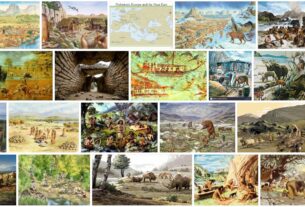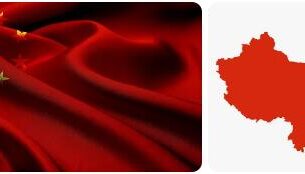Fiji is a republic. The Constitution of 1990 is in force. Administratively it is divided into 4 districts (Central, Eastern, Western and Northern) and the island of Rotuma. Check diseaseslearning for political system of Fiji.
The capital, Suva (Viti Levu), hosts the secretariat of the Pacific Islands Forum (formerly UTF), regional offices of a number of international organizations, and the University of the South Pacific. Other large cities: on Viti Levu – Lautoka (over 30 thousand people), Nadi (about 20 thousand), on Vanua Levu – Labasa (over 20 thousand).
The head of state is the President and Vice President. There is an advisory Presidential Council and a Grand Council of Chiefs (the highest representatives of the clan hierarchy). The President (Ratu Joseph Iloilo, since 2000) and Vice President (Jope Senilo-lu) are elected by the Grand Council of Chiefs for a maximum of two terms of 5 years on the advice of the Prime Minister. The legislature is a bicameral parliament. The lower, House of Representatives (71 deputies), is elected for 5 years (voting is mandatory, the next elections are in 2006). The composition is complex: out of 46 ethnic seats, 23 are reserved for ethnic Fijians, 19 for Indo-Fijians, 3 for other ethnic groups and 1 for Rotuma Island, 25 seats are non-racial. There are 34 senators in the upper house, who are also appointed by the president for 5 years (24 indigenous Fijians – on the recommendation of the Grand Council of Chiefs, 9 by their own non-racial choice and 1 by the recommendation of the Rotuma Island Council). Executive power belongs to the government, headed by the prime minister (L. Karase, since 2002), who is appointed by the president from parliamentarians – indigenous Fijians and is subject to approval by the lower house. On the advice of the prime minister, the president appoints a cabinet of members of parliament.
Political parties: The political party system reflects complex inter-ethnic relations. 21 parties are registered, some are purely racial, some are mixed in composition. The largest: FLP (leader – M. Chowdhry, 34.8% of the vote in the last elections), United Party of Fiji (L. Karase, 26%), PNF (reflects the interests of Indians, 10.1%), Conservative Alliance Party (indigenous Fijians, 9.9%), etc.
The Fiji Army is made up of the Army and Navy. The share of military spending in GDP is 2.2%. The Fiji Armed Forces are involved in various international peacekeeping operations in the region and beyond.
The Republic of Fiji has diplomatic relations with the Russian Federation (established with the USSR in 1974).
GDP per capita – approx. 5.5 thousand US dollars (according to the purchasing power parity of the currency, 2002). St. 60% of the country’s population is still employed in semi-subsistence agriculture. However, Fiji has the most diversified economy among the developing nations of Oceania. The turbulence of the domestic political situation affects the rate of GDP growth. In 1994-2001 they fell to an average of 2.65% compared with 3.1% in 1984-93, but in 2001-02 they rose again to over 4%. The two leading industries are tourism (the main source of foreign exchange) and sugar production (the main export item). With an export orientation, the clothing, forestry, woodworking and furniture industries, and fishing are rapidly developing. Gold and silver are mined and exported. In agriculture, coconut palm is grown (copra and palm oil are exported), breadfruit, bananas, taro, yams, ginger, nutmeg, sweet potato, citrus fruits, cattle, pigs, sheep are bred. Approximately 50% of the economically active population is employed in sugar production, 15% in the public sector, and the rest in industry and the market service sector. Depending on the state of the sugar industry (it has been in depression since 2000), the unemployment rate fluctuates greatly: in the range of 7-25%. The drain of qualified personnel continues from the country, largely caused by political instability. Depending on the state of the sugar industry (it has been in depression since 2000), the unemployment rate fluctuates greatly: in the range of 7-25%. The drain of qualified personnel continues from the country, largely caused by political instability. Depending on the state of the sugar industry (it has been in depression since 2000), the unemployment rate fluctuates greatly: in the range of 7-25%. The drain of qualified personnel continues from the country, largely caused by political instability.
600 km of narrow gauge railways are used to transport sugar cane. Of the approximately 3.5 thousand km of roads, 1.7 thousand are paved. The main seaport, the largest in the South Pacific region, is Suva. Serves not only Fiji, but also neighboring countries. There is no own navy, but several dozen ships carry out coastal transportation. Of the 27 airports, 3 have paved runways, including Nadi International Airport, the largest in the South Pacific, which also serves neighboring countries. Internet users – 15 thousand people. (2002).
Fiji receives up to 400 thousand foreign tourists per year (2002), mainly from Australia and New Zealand.
Foreign investment and foreign aid play an important role in the Fiji economy. The main foreign economic partners are Australia, the USA, New Zealand.
Primary education for children aged 6-12 is free (more than 90% of children attend school). You can continue your studies with the financial support of the state at a medical school, agricultural and pedagogical colleges, the Fiji Technological University and the University of the South Pacific, where citizens of all countries and territories of Oceania can study.


